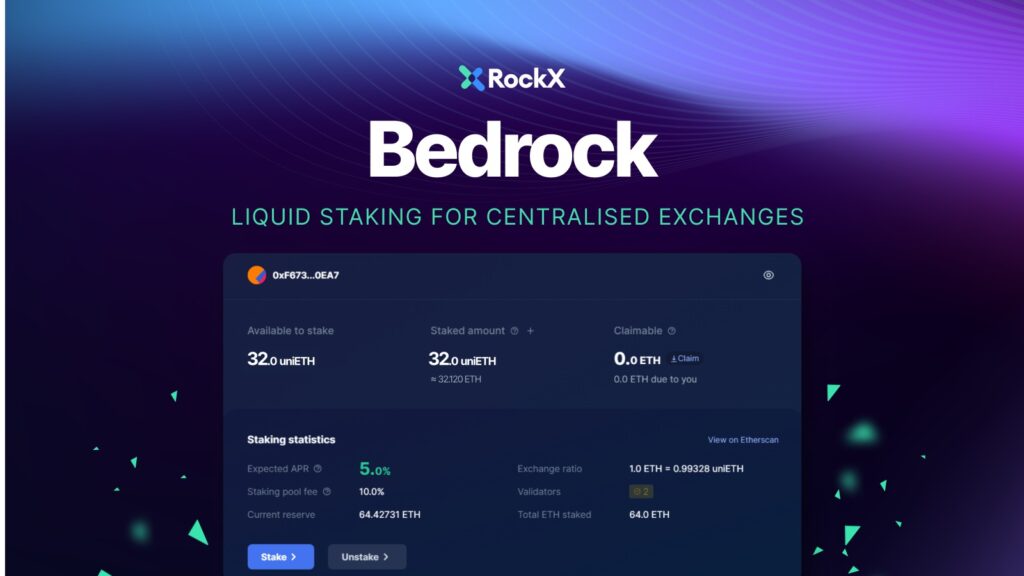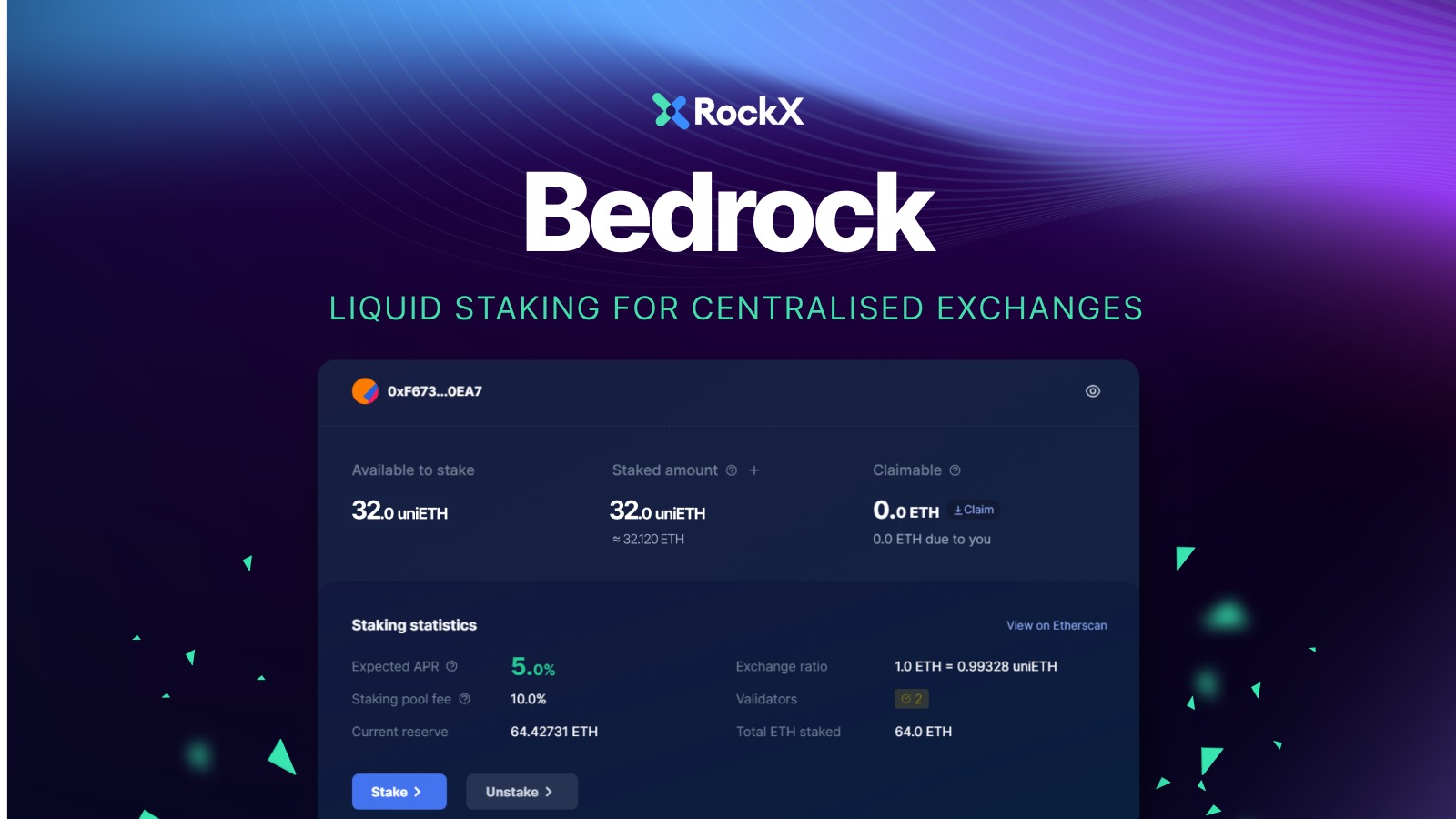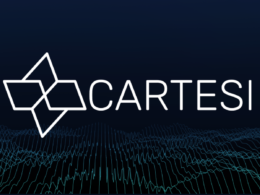The Bedrock liquid staking solution is an on-chain, non-custodial, and independent solution that complies with regulatory requirements so institutions can easily participate in large-scale liquid staking. It also provides a secure, transparent, and compliant staking infrastructure that is resistant to network latency and congestion issues. Additionally, Bedrock is highly flexible and allows users to customise their staking strategy to suit their individual needs. Here, we will discuss how Bedrock is the ideal solution for liquid staking on centralised exchanges (CEX).
Drawbacks of Liquid Staking on CEXs

There are a number of difficulties associated with implementing liquid staking on CEXs, including an absence of transparency regarding the liquid staking assets provided by the exchange. In many instances, the supply of ETH liquid staking assets from CEXs cannot be verified due to the fact that they are built off-chain. As a result, liquid staking solutions offered by CEXs may not be agnostic or fully integrated with decentralised exchanges, limiting their use. For instance, exchange-provided liquid staking assets may not be compatible with DeFi protocols, preventing users from taking advantage of the liquidity and DeFi opportunities that are available through these protocols.
The second drawback centres around regulatory concerns. In some parts of the world, regulators are clamping down on the classification of crypto assets, including liquid staking. Some regulators may consider liquid staking a security offering, subjecting the CEX to additional regulations and oversight. This could potentially impact the ability of CEXs to offer liquid staking products, as well as the ability of customers to access them. Furthermore, the increased regulatory oversight could result in increased compliance costs for CEXs and customers alike.
As a final point, CEXs interested in offering liquid staking to their clients face the challenge of developing a liquid staking solution. There can be a number of complexities involved in setting up liquid stake solutions, such as Bedrock, as well as integrating them with existing infrastructure. In order to achieve this goal, additional resources and technical expertise may be required. Additionally, there may be other considerations that need to be taken into account, such as the cost of developing the necessary infrastructure, the security of the system, and the scalability of the solution. It is important for CEXs to take into account the full scope of the development project and ensure that it is feasible before committing to it.
How Bedrock Provides a Holistic Liquid Staking Solution for CEXs

Bedrock is a cutting-edge liquid staking protocol designed to provide a holistic solution for centralised exchanges seeking to overcome the limitations of liquid staking.
To start, Bedrock’s liquid staking token, uniETH, is built on-chain. Minting of uniETH will also always be done on-chain. Its supply is easily verifiable since every contract is open-source and available for viewing by anyone. CEXs do not have to trust Bedrock as a liquid staking provider, as they have the ability to verify the supply themselves. Moreover, Bedrock is an independent protocol, which makes it very adaptable and agnostic to any CEX or decentralised exchange (DEX), thus making uniETH and any future uniTOKEN truly universal.
Bedrock has been under careful development for well over a year now. Its smart contract has been audited by Peckshield, a leading audit firm in the industry, and the white paper is freely available online for public scrutiny. Bedrock also utilises a hybrid cloud architecture and backup nodes to avoid any single point of failure. An around-the-clock monitoring and recovery system has also been put in place to ensure that Bedrock’s nodes are always online.
Bedrock: The Best ETH Liquid Staking Solution For CEXs

Designed with innovative architecture, robust security features, and an easy-to-use interface, Bedrock is the ideal solution for centralised exchanges looking to implement liquid staking and stay on top of rapidly changing crypto trends. It is transparent, always on-chain, secure, and compliant to allow anyone to be able to maximise the yield on their digital assets.
Bedrock is now live and available for anyone to try.









